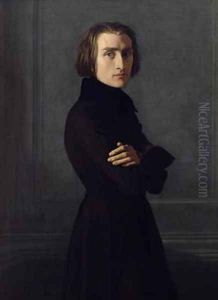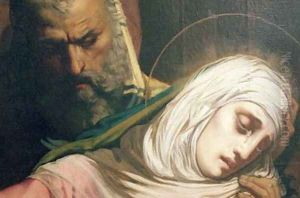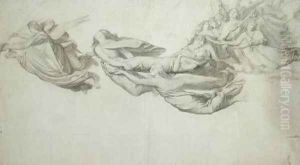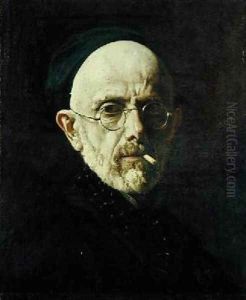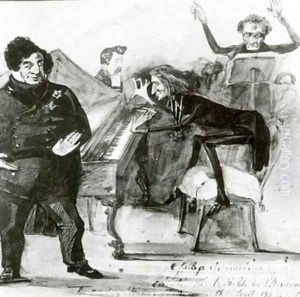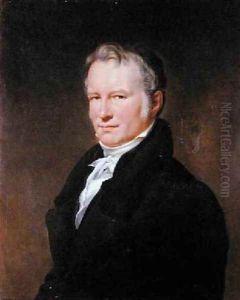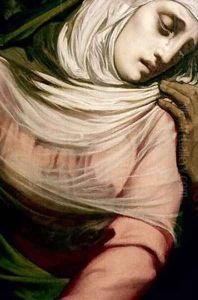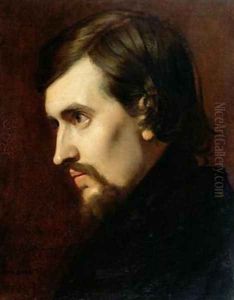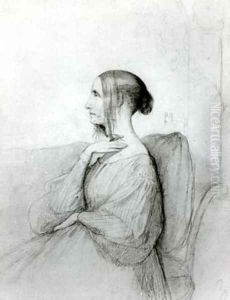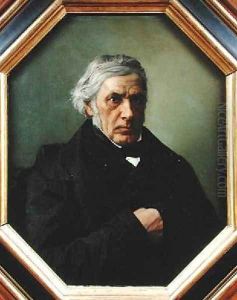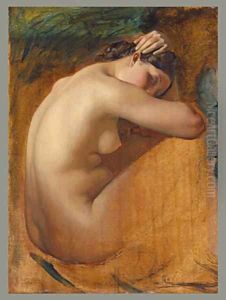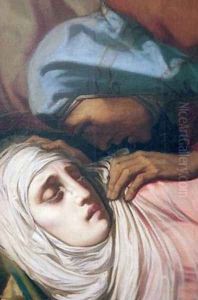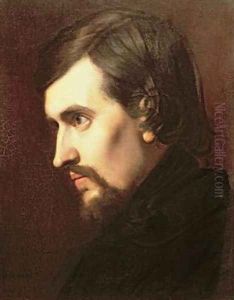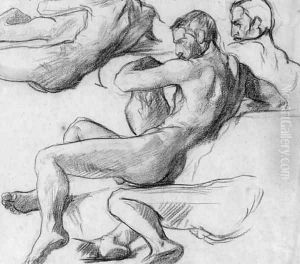Henri (Karl Ernest Rudolf Heinrich Salem) Lehmann Paintings
Henri Lehmann was a significant figure in the 19th-century European art scene, particularly known for his contributions to French painting. Born on April 14, 1814, in Kiel, in the Duchy of Holstein (then part of the Danish Monarchy, now in Germany), Henri was deeply influenced by the rich cultural milieu of his time. His father, Leo Lehmann, was a minor but respected artist, which provided young Henri with an early exposure to the world of art.
Lehmann moved to Paris in 1831 to further his studies and quickly became a prominent pupil of the celebrated neoclassical painter Jean-Auguste-Dominique Ingres. Ingres's influence on Lehmann was profound, shaping his technique, thematic choices, and overall approach to art. Lehmann adopted his mentor's love for clear lines, precise draughtsmanship, and classical subjects, which became hallmarks of his own style.
Throughout the 1840s and 1850s, Lehmann established himself as a masterful portraitist and a skilled history painter. He was adept at capturing the likeness and personality of his sitters while imbuing his historical scenes with a sense of drama and emotional depth. His works were regularly exhibited at the Paris Salon, where he garnered critical acclaim and won several awards. Lehmann's paintings reflect the romantic sensibilities of his era, blending them with the neoclassical discipline he inherited from Ingres.
In addition to his painting, Lehmann was also an influential teacher. In 1853, he took a position as a professor at the École des Beaux-Arts in Paris, one of the most prestigious art schools in Europe. There, he mentored a new generation of artists, imparting the techniques and ideals of neoclassical art while encouraging his students to develop their unique voices. Among his pupils were notable figures who would go on to make significant contributions to the art world in various styles and mediums.
Lehmann's later years saw a continuation of his artistic output, though his style evolved, reflecting the changing tastes and artistic trends of the late 19th century. Despite the rise of new movements such as Impressionism, which moved away from the neoclassical ideals, Lehmann remained committed to his artistic principles, blending them with more modern sensibilities in his later works.
Henri Lehmann passed away on March 30, 1882, in Paris. His legacy lives on through his contributions to French art, his influence on a generation of artists, and his enduring works that continue to be celebrated for their beauty, skill, and emotional depth.

